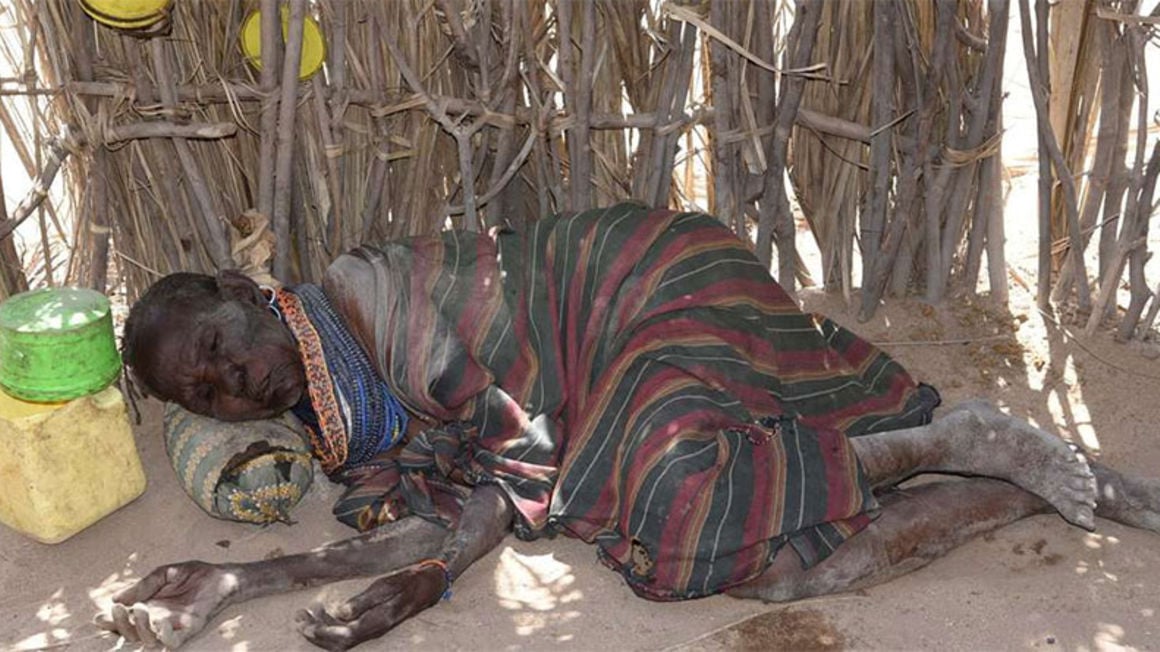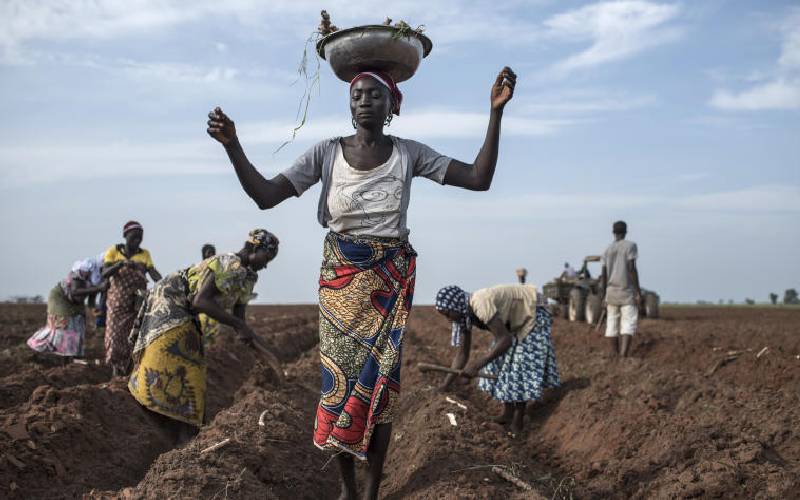Ideas & Debate
Kenya needs a new financing model in the war on climate change
Thursday 07 April 2022
Asokon Lomulin in his hut in Kamekwi village in Turkana during a prolonged drought in 2019. PHOTO | JARED NYATAYA
Summary
- Urgent action is needed to build the resilience and adaptive capacities of sectors and communities to cope with the impacts of climate change and drive sustainable growth.
- The Government of Kenya estimates that $44 billion is needed by 2030 to implement various adaptation interventions in key sectors.
- For a long time, Kenya has depended on aid and grants to fund actions that address the impacts of climate change.
Kenya is experiencing a prolonged drought and it is becoming evident that climate change is now directly and significantly affecting local livelihoods.
The country is only about 20% arable, making it highly vulnerable to extreme weather events such as high temperatures, droughts and floods, which have serious consequences for food security, economic growth and poverty. social stability.
Urgent action is needed to build the resilience and adaptive capacities of sectors and communities to cope with the impacts of climate change and drive sustainable growth.
The Government of Kenya estimates that $44 billion is needed by 2030 to implement various adaptation interventions in key sectors. Despite this significant funding need, a report published on the climate finance landscape in Kenya shows that a large portion of the funds that flowed into the country in 2018 were directed towards mitigation actions (79.8%), and mainly for renewable energy projects.
Only 11.7% of funding went to adaptation, while the remaining 8.5% went to cross-cutting issues. This low investment, coupled with competing development priorities and reduced economic growth due to the impacts of Covid-19, makes mobilizing the resources needed for adaptation action a daunting task. But it must be done.
For a long time, Kenya has depended on aid and grants to fund actions that address the impacts of climate change. These are largely designed as emergency responses and have proven to be unsustainable. The need to find alternative, innovative and long-term strategies to raise funds for adaptation is glaring.
How can this be accomplished?
The adoption of a systemic approach that mobilizes the resources and expertise of the entire public sector ecosystem, foreign and domestic investors, financial institutions, development partners, research and non-governmental organizations. government is a plausible approach.
These actors could be brought together in an innovative framework that I would call a National Adaptation Finance Framework (NAFF).
The starting point would be for NAFF to address key barriers to fundraising for adaptation while capitalizing on existing and emerging opportunities.
A top priority would be to engage the private sector, which holds great partnership potential due to its ability to mobilize significant resources, skills and technologies, as well as invest in research and development.
So far, the sector’s participation in adaptation actions has remained low for several reasons, which should be addressed first.
One of the main ones is that climate change adaptation and resilience building interventions are not considered cost-effective, as they involve investments in natural resources such as land, water, forests and ecosystems, which are widely regarded as public goods.
The general lack of a business case demonstrating costs, returns, viability and timelines discourages private sector participation in funding climate change adaptation.
The challenge is not unique to Kenya. Between 2017 and 2018, only 1.6% of global adaptation funding came from the private sector.
Analysis by the Global Center on Adaptation and the World Resources Institute, however, has demonstrated that investing in adaptation can generate high returns on investment over the long term, with benefit-cost ratios ranging from 2:1 to 10:1, and even higher in some cases.
The analysis also showed that investing $1.8 trillion in early warning systems, climate-resilient infrastructure, improved dryland agriculture, mangrove protection and water resource resilience water between 2020 and 2030 had the potential to generate at least $7.1 trillion in total long-term net benefits. .
It is important to leverage these findings to develop strong business cases to drive investment in climate adaptation projects. Without cost estimates, for example, sound investment proposals with clear revenue models cannot be developed for the private sector to analyze and commit to.
NAFF would fill this gap by developing a national registry that would provide detailed information on adaptation pipeline projects. As this pipeline is developed, a cost-benefit analysis would also be conducted to look beyond financial returns and also consider social and environmental benefits that could contribute significantly to sustainable and inclusive development.
It could further explore the implementation of innovative and long-term financing mechanisms for adaptation beyond concessional loans and grants, which currently account for 52% and 47% of all adaptation finance respectively.
Clearly, other relevant financial instruments such as equities, guarantees, resilience bonds, debt-climate swaps, adaptation benefit mechanisms and other risk-sharing mechanisms need to be explored. whether the $44 billion target for adaptation finance is to be met.
For Kenya to increase its financing needs for adaptation, additional priority will also need to be given to mobilizing and tracking more domestic resources.
To implement the NAFF, it could be nested within an existing national financing framework, such as the Kenya Climate Change Fund or through national private sector associations such as the Kenya Bankers Association.
The NAFF could also be integrated into a new institutional arrangement between the Ministries of Finance and Environment, with partners from various industries providing additional support through grants for technical assistance and capacity building.
It would take less than a year to set up the NAFF and make it operational.




